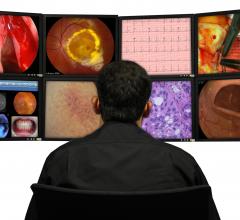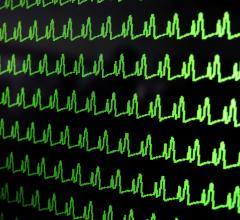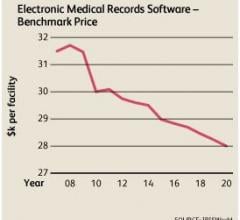
Siemenss syngo Dynamics graphical reporting tools simplify documentation and provide functions for the most intricate procedure. Integrated with the evidence-based reporting solution, the tools augment the text generated by other measurements.
It’s no secret that many cardiology departments work with disparate systems to manage data, images and reports. These various iterations include cardiovascular information systems (CVIS), cardiac image and information management system (CIIMS), cardiac picture and arching communication systems (cardiac PACS), ECG management systems, echocardiography workstations and others.
In keeping with the current trends of interoperability and streamlining workflow, vendors are creating systems that streamline reports and act as a single repository for all things cardiac.
Many cardiac systems have focused on streamlining reports to help reduce dictation and transcription due to high costs. A recent independent, national survey conducted on behalf of Wolters Kluwer Health and ProVation Medical underscores this point. The survey, designed to measure the use and satisfaction levels with CVIS, found 31 percent of cath lab directors reported no quantifiable improvements in revenues or the revenue cycle since implementing a CVIS, in part due to continued reliance on dictation for physician documentation. Sixty-nine percent of respondents reported that physicians continue to dictate. About one-fourth of those surveyed estimated that their cath lab could save $100,000 or more by eliminating the cots associated with dictation and transcription. Overall, 88 percent of the 151 hospital cardiology and cath lab directors surveyed said improving workflow and increasing efficiencies would most influence their purchasing decisions on CVIS solutions.
Streamlined reporting
Children’s Hospital of Michigan, Michigan’s only freestanding children’s hospital, performs more than 1,800 cath lab procedures per year. In 2006, Children’s Hospital installed three Siemens Healthcare’s syngo Dynamics in an effort to more efficiently streamline cath lab reporting. The syngo Dynamics solution is a multimodality diagnostic image review and evidenced-based reporting system that allows hospitals to create evidence-based reports for both notes and images.
According to Children’s Hospital of Michigan, its cath lab reporting process was plagued with inefficiencies. Prior to the installation of the syngo Dynamics, doctors dictated two separate reports (one for the referring physician and another for the medical record). Both reports were transcribed by staff before the physician proofed them. In addition, hemodynamic information was reported by hand and later copied into reports. Ultimately, the referring physician wouldn’t receive the report for seven to 10 days. With the syngo Dynamics, the hemodynamic information is auto-populated into the final report, a feature that has improved efficiency, according to Paul Webster, lead cath lab technologist at the Children’s Hospital of Michigan.
Overall, 20 percent of the cath reports are completed, sent via e-mail to the
referring physician and the billing department before the patient even leaves the cath lab, according to Webster. Since the bills are not sent to insurance companies until a final report can be attached, these faster reports allow for quicker billing, according to Siemens.
Webster said syngo Dynamics is set up to easily search and find old studies. This is important for the hospital, as it treats many children with congenital heart defects, who may likely be treated with multiple procedures over their lives.
Another system that has increased efficiency is the Synapse ProSolv CardioVascular 4.0 by Pro Solv Cardiovascular, a division of FUJI Medical System USA Inc.
University Hospital in San Antonio, TX, (part of the University of Texas System) started using ProSolv to manage echo images while still utilizing a home-grown cardiac report generator. Eventually, the information management was incorporated into the system, and the hospital’s vascular lab adopted the system as well. According to John Erikson, M.D., Ph.D., FACC, throughput in the echo lab increased by approximately 20 percent.
“You don’t have to watch the sonographer try and capture the perfect view of a valve,” Dr. Erikson said. “Now they clip the best picture. That’s a refinement because we used to keep our studies five or six minutes on videotape. Some difficult studies trended up to 10 minutes. If you wanted to go back and look for something, you used to have to go back two minutes to see something on the tape. With the current system, you just go page up, page down, or click on the picture you want to look at. That flexibility is really nice.
“The studies are getting shorter,” he continued. “As sonographers are getting more confident in what they are clipping the total number of clips has gotten smaller per study, so our throughput has gone up about 20 percent.”
The hospital decided to streamline its systems to more easily integrate into an EMR, Dr. Erikson said. The patient reports from ProSolv system are now saved into the patient record via PDFs.
The system also allows for easier access to old cases.
“We like it because we can archive studies and do side-by-side comparisons,” Dr. Erikson said. “It’s easier to go back and see a list all procedures we do. We had this feature on our old home-grown information system for reports, but with the ProSolv we can see images too.
“We installed a view station in our echo conference room, so our fellows can show interesting echoes once a week. We can quickly bring up the studies and do cross-referencing. We also create teaching files with the system.”
Dr. Erikson said he expects his department to upgrade to ProSolv Cardiovascular 4.0.1, which was recently released at ACC 2009. The upgraded system features integrated ECG management capabilities from any department.
New kid on the block
In February 2009, RIS/PACS-vendor NovaRad came to an agreement with Digisonics to offer a bundled cardiac image and information system. Customers of either system can upgrade their system to the bundle pack, according to Jeffrey Kennelly, RT(R), CIIP, senior sales engineer, NovaRad. The bundled system is completely Web-based and can be launched from anywhere. Users can move from one application to the other with one click.
“Our customers want to utilize our PACS for their growing cardiovascular programs,” Kennelly said. “We cater to smaller and medium size facilities, including urgent cares and private practices. A lot of times they don’t have the resources to buy a full-blown cardiac PACS outside of their normal PACS. [The NovaRad PACS] has the viewing abilities that you’d need for a cardiac PACS application, which you would find in a CVIS solution, but we didn’t have the structured reporting abilities to grab that information from the ultrasound machine, the cath, etc, so that’s when we found Digisonics.”
Kennelly said Digisonics was an appealing partner, in part, because it was awarded the 2008 Best in KLAS for the cardiology reporting market segment.
“Digisonics has their own complete system, but they wanted to reach other markets,” Kennelly said. “Digisonics has integration with our PACS, so the cardiologist or the radiologist who might be dabbling in that arena can sit down in one location, view images and complete their reporting in one place.”

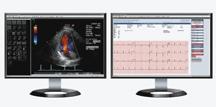
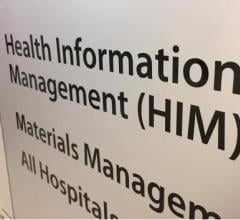
 August 13, 2019
August 13, 2019 


